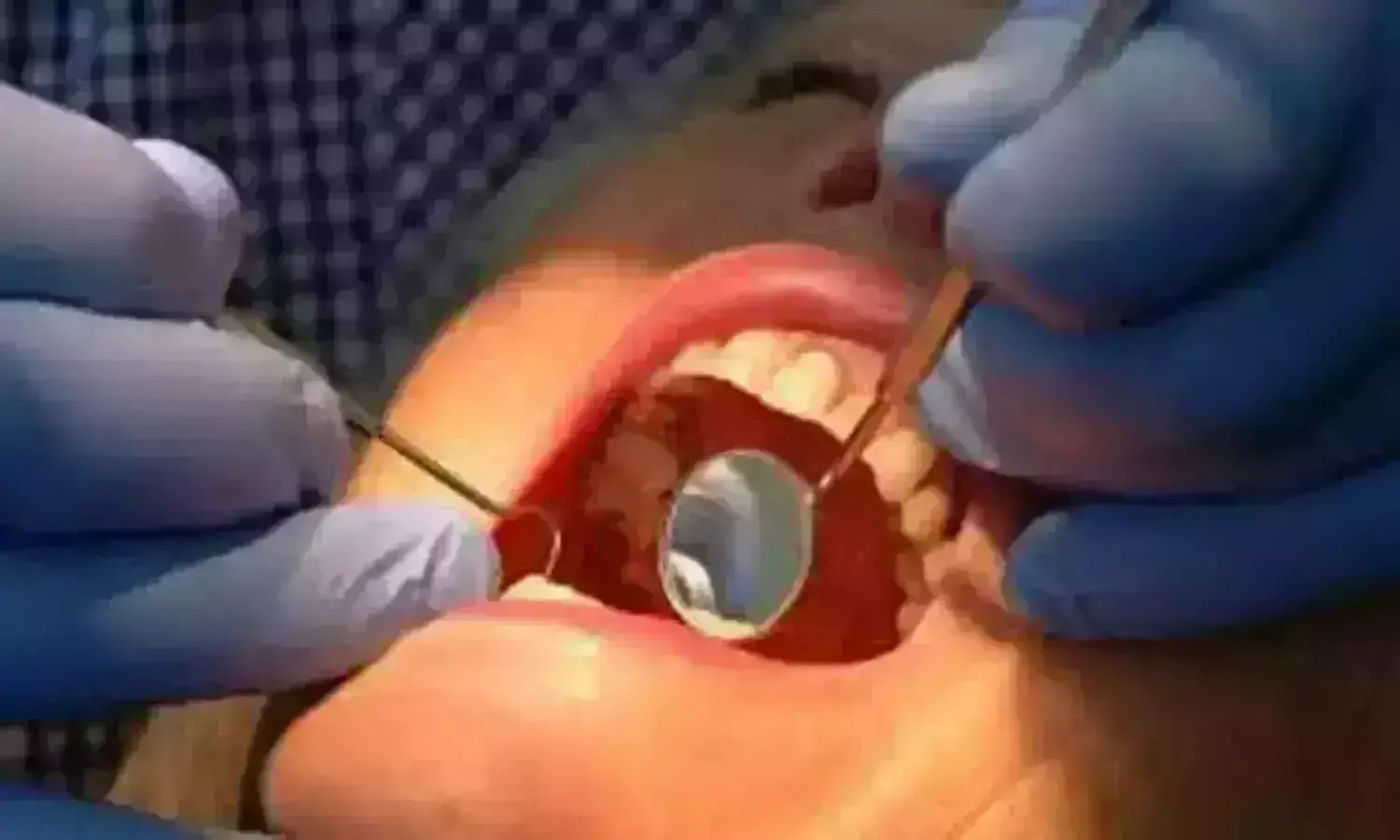- Home
- Medical news & Guidelines
- Anesthesiology
- Cardiology and CTVS
- Critical Care
- Dentistry
- Dermatology
- Diabetes and Endocrinology
- ENT
- Gastroenterology
- Medicine
- Nephrology
- Neurology
- Obstretics-Gynaecology
- Oncology
- Ophthalmology
- Orthopaedics
- Pediatrics-Neonatology
- Psychiatry
- Pulmonology
- Radiology
- Surgery
- Urology
- Laboratory Medicine
- Diet
- Nursing
- Paramedical
- Physiotherapy
- Health news
- Fact Check
- Bone Health Fact Check
- Brain Health Fact Check
- Cancer Related Fact Check
- Child Care Fact Check
- Dental and oral health fact check
- Diabetes and metabolic health fact check
- Diet and Nutrition Fact Check
- Eye and ENT Care Fact Check
- Fitness fact check
- Gut health fact check
- Heart health fact check
- Kidney health fact check
- Medical education fact check
- Men's health fact check
- Respiratory fact check
- Skin and hair care fact check
- Vaccine and Immunization fact check
- Women's health fact check
- AYUSH
- State News
- Andaman and Nicobar Islands
- Andhra Pradesh
- Arunachal Pradesh
- Assam
- Bihar
- Chandigarh
- Chattisgarh
- Dadra and Nagar Haveli
- Daman and Diu
- Delhi
- Goa
- Gujarat
- Haryana
- Himachal Pradesh
- Jammu & Kashmir
- Jharkhand
- Karnataka
- Kerala
- Ladakh
- Lakshadweep
- Madhya Pradesh
- Maharashtra
- Manipur
- Meghalaya
- Mizoram
- Nagaland
- Odisha
- Puducherry
- Punjab
- Rajasthan
- Sikkim
- Tamil Nadu
- Telangana
- Tripura
- Uttar Pradesh
- Uttrakhand
- West Bengal
- Medical Education
- Industry
Chlorhexidine an ideal prophylactic in dentistry when mechanical debridement not possible: Study

The antimicrobial properties of chlorhexidine make it an ideal prophylactic when mechanical debridement is not possible, according to a recent study published in the International Dental Journal.
The aim of this work was to review the current uses of chlorhexidine (CHX) in dentistry based on its mechanism of action, whilst highlighting the most effective protocols that render the highest clinical efficacy whilst limiting adverse drug reactions.
A literature search was conducted using the keywords chlorhexidine, mechanism of action, adverse effects, and dentistry using databases in the University of Toronto library system. The titles and abstracts were read, and relevant articles were selected.
Results of the study are:
A total of 1100 publications were identified, 100 were investigated, and 67 of them were used. Out of the 67 selected articles, 12 were reviews on CHX; 5 articles focussed on CHX gels; 13 focussed on CHX mouthwashes; 8 focussed on CHX products; 13 discussed adverse effects associated with CHX; 13 focussed on periodontal pathology and treatment; 6 focussed on implant periodontal and dental surgeries; 7 evaluated effects on caries; 6 looked at the mechanisms of action; and 12 focus on the antibacterial and antimicrobial impact on the oral biome. There were multiple areas of overlap amongst the articles, and results showed that CHX provides different uses, but mainly as an adjunct to various treatments. Mouthwash was the most superior medium when used in short time spans when mechanical prophylaxis was not possible for the prevention of gingivitis and maintenance of oral hygiene. CHX products are often used in periodontics, post–oral surgical procedures, and as a prophylaxis for multiple invasive procedures with minimal adverse effects. Tooth staining was the most negative adverse effect reported by patients.
Thus, CHX's antimicrobial properties make it an ideal prophylactic when mechanical debridement is not possible. CHX mouthwash appears to be more effective compared to gels. Concentrations of 0.12% to 0.2% are recommended; any mouthwash with concentrations above 0.2% will unnecessarily increase the unwanted side effects. CHX is useful amongst various areas of dentistry including oral surgery, periodontics, and even general dentistry. For long-term treatments, especially in periodontitis patients (stage I-III) undergoing nonsurgical treatments, CHX chips are recommended. CHX chips are also recommended as an adjunct to implant debridement in patients with peri-implant mucositis and peri-implantitis over CHX mouthwash and gels.
Reference:
Chlorhexidine in Dentistry: Pharmacology, Uses, and Adverse Effects by Frank Poppolo Deus et al. published in the International Dental Journal.
https://www.sciencedirect.com/science/article/pii/S0020653922000259
Key words
Chlorhexidine, Mechanism of action of CHX, Adverse effects of CHX, Dentistry, International Dental Journal, Frank Poppolo Deus, Aviv Ouanounou,
Dr. Shravani Dali has completed her BDS from Pravara institute of medical sciences, loni. Following which she extensively worked in the healthcare sector for 2+ years. She has been actively involved in writing blogs in field of health and wellness. Currently she is pursuing her Masters of public health-health administration from Tata institute of social sciences. She can be contacted at editorial@medicaldialogues.in.
Dr Kamal Kant Kohli-MBBS, DTCD- a chest specialist with more than 30 years of practice and a flair for writing clinical articles, Dr Kamal Kant Kohli joined Medical Dialogues as a Chief Editor of Medical News. Besides writing articles, as an editor, he proofreads and verifies all the medical content published on Medical Dialogues including those coming from journals, studies,medical conferences,guidelines etc. Email: drkohli@medicaldialogues.in. Contact no. 011-43720751


